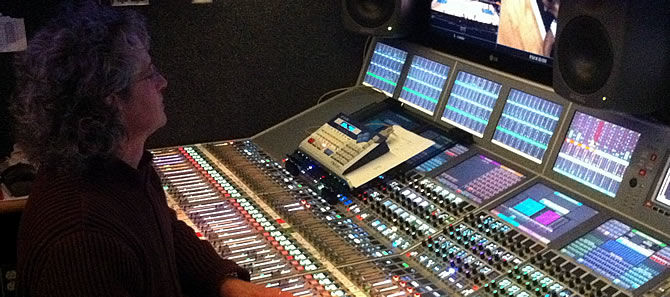Jonathan Freed is a freelance, Emmy-award winning network mixer who has been in the audio industry for almost 40 years. In his current role as a senior audio engineer for the NBA, his team is responsible for setting up and executing the live broadcast mix for major network basketball games, while ensuring that broadcast microphones both on and off the court are picking up every nuance of audio to support the camera angles for the live feed.
Throughout his entire career – including 17 years as a musician and recording studio owner – Freed has appreciated Sennheiser microphones for their clarity and accurate sonic representation. To capture sounds on the court, he has continually relied on the Sennheiser MKH 70 and MKH 416 shotgun mics as his ‘cornerstones’. Recently, Freed was given an opportunity to try Sennheiser’s newest entries into the realm of broadcast microphones: the MKH 8060 and MKH 8070.
How many microphones do you typically have on the court and where are they positioned?
Jonathan Freed: We have somewhere north of 20 microphones during the regular season, and in the post season we will have anywhere between 26 and 30 microphones on the court. The microphones need to be placed discreetly in various locations so we can pick up audio for whatever the cameras are looking at. The short shotguns, such as the MKH 8060s, would typically be placed at the center of the court, facing 45 degrees out from the centerline – one on each side. There are four handheld cameras: one near side center, one far side center, one under the left basket and one under the right basket. These will usually get long shotgun mics, such as the MKH 8070s. We also use a shotgun mic attached to each basket stanchion aimed at the top of the key, and various surround crowd mic arrays high up in the arena. There are lavalier mics we will use as well, under each net and along the scorer’s table.
Can you describe how you used the MKH 8060s and MKH 8070s and how they performed?
Jonathan Freed: I had been using the Sennheiser MKH 70 and MKH 416 microphones for a long time. These are industry standards, and are indeed a tough act to follow. I put the new mics into operation where I had previously been using the MKH 70s and 416s and what I noticed about the 8060, and by extension the 8070, is that the capsules seemed to be more sensitive. The on-axis sound is quite noticeably more powerful and clear, and the off-axis sound is more natural. After a couple of days of getting great results in analog mode, I added the Sennheiser MZD 8000 digital module and got even better results. I instantly fell in love with the combination of the MKH 8060 and the MZD 8000 digital module.
What is the benefit of using digital mics in this scenario?
Jonathan Freed: I have been a stalwart supporter of using digital mics wherever possible because they seem to remove cloudiness from the sound in the locations where you are using them; I get greatly enhanced detail and clarity. At a distance of 25 or 30 feet away, you can really tell everything that is going on in your target area. Using the MZD 8000 digital module in combination with these new Sennheiser mics, I can actually hear what people are saying from that distance. I am getting the clearest representation of what I am trying to pick up and the most natural sound.
Does this benefit the mix?
Jonathan Freed: Absolutely. Since the sounds you are bringing into the mix are clearer and more detailed, you can bring the levels down a little bit and still get the same impact. This is critical because ultimately you want the announcers to stand out well on top of the mix. One of the things that viewers complain about more than anything else is that they can’t hear the announcers well on sporting events – they don’t call to complain that they can’t hear the ball bouncing. By getting the clearest possible sound from the game, I can reduce the overall energy of the mix relative to the announcers. This not only makes things more intelligible for the production crew, but also the viewers at home – whether they have a small television or a high-definition home theater. This is something I have been pursuing for a number of years now.
How will this influence your mic setup moving forward?
Jonathan Freed: My goal is to try to put out a majority of digital microphones where we used to have analog mics. The more of them we incorporate into the mix, the more dramatic the overall effect will be; I can already hear a dramatic effect zone by zone using the MKH 8060s and 8070s in combination with the MZD 8000 digital module; I believe that adding a higher percentage of digital mics will increase this effect even more, thus creating a better listening experience for viewing audiences.


